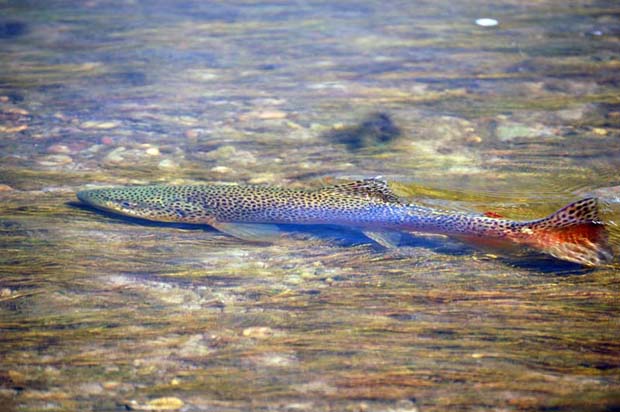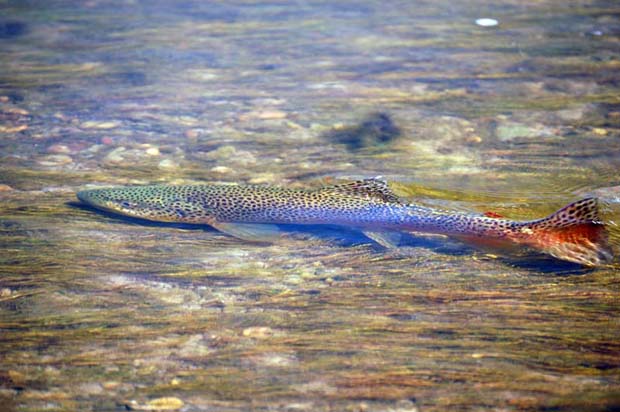New science reveals threats to prize fishing streams in warming worl
Published September 18, 2013
Ben Jervey for National Geographic
[dropcap]T[/dropcap]his month, anglers who flock to Montana in search of their own authentic A River Runs Through It experience are out of luck. On September 4, the Blackfoot River, centerpiece of Norman Maclean’s beloved story (and its film adaptation that gave the entire fly-fishing industry a boost in the early 1990s), was closed to fishing by officials from Montana Fish, Wildlife, and Parks. They cited “an effort to protect fish from the stress of low stream flows.” (The river has since been reopened to fishing, but drought conditions remain.)
Such river closures have become more common in recent years, in Montana and beyond. They’ve become necessary as coldwater fish populations struggle to deal with low flows and warmer waters, symptoms that scientists link to the rising global temperatures brought about by climate change.
Last year, for instance, stretches of the Madison, Gibbons, and Firehole Rivers—all prized fishing destinations in the Yellowstone region—were closed in August. Scientists and anglers are in agreement: Climate change is already impacting the sport of fishing, and it’s likely to get a whole lot worse.
“We’ve seen huge shifts here in Montana,” said Todd Tanner, a lifelong fisherman who spends 200 to 250 days a year on the water, and who has been living in Montana for over three decades.
“Over the last 20 or so years, we’re seeing this litany of shifts in weather patterns, and with them, a steady degradation in many of our rivers,” said Tanner. “It’s directly related to the snow going early, then to warmer springs and summers.”
A few years ago, Tanner started the nonprofit, nonpartisan advocacy organization Conservation Hawks, and he argues that fishermen are the best equipped to see firsthand the impacts of climate change. “You can’t be out fishing for trout or bass around here and not notice the change,” he said.
Swimming Upstream
A new report, published September 4 by the National Wildlife Federation (NWF)—one of the country’s largest environmental groups—backs up the anecdotal evidence and explains the variety of threats that climate change poses. Besides the closures themselves—which are typically the result of droughts and earlier than normal melt of alpine snowpack—many rivers are simply getting warmer. According to the NWF report, half of the major American rivers surveyed in a 2010 study experienced “significant warming trends over the past 50 to 100 years.”
To read complete story click here […]








